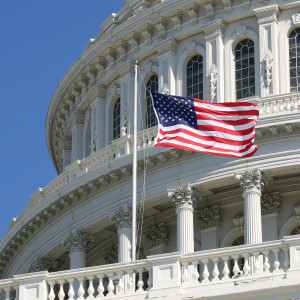In testimony before the Senate Committee on Banking, Housing, & Urban Affairs last week, Treasury Secretary Steven Mnuchin observed, “the engine of American prosperity has slowed,” in part due to “imprudent regulations crafted in the midst of crisis.” With “historic reforms to both taxes and regulation,” Mnuchin believes GDP growth of 3 percent or more is attainable.
The details of this historic agenda are not yet clear, but critical to any reform should be cleaning out the regulatory cobwebs that have been accumulating for seven decades.
A look to our neighbor in the north provides a glimpse of the power of some simple spring cleaning. Since 2001, the Canadian province of British Columbia has cut its regulatory requirements by nearly 50 percent. In terms of real GDP per capita growth, the province went from the worst performing major economy in Canada in the 1980s and ’90s to the best in the years since reform was enacted. Alongside this turnaround, British Columbia has maintained a position as one of the healthiest places in Canada, and by some measures, the world.
Contrast this with the United States, where the pendulum of regulatory accumulation swings in just one direction, and economic growth is bitterly disappointing.
A core reason for our troubles may be the near relentless rise of federal regulation. Regardless of which political party controls the White House or Congress, the level of federal regulation has been growing for years. In 1950, the U.S. Code of Federal Regulations (CFR) was under 10,000 pages long. By 1975, it had grown to over 70,000 pages. By 1990—after the “Reagan Revolution” supposedly rolled back big government—it stood at over 125,000 pages. Today the CFR is nearly 180,000 pages long and includes over one million restrictions (words like “shall,” “must” and “prohibited”). The state governments have hundreds of thousands of additional restrictions on their books, too.
At some point, the accumulation of rules is not just costly—it’s absurd. Regulators become like hoarders who refuse to throw away any possessions. They add thousands of new rules to the pile each year, but rarely, if ever, do they take a break to seriously clean up what’s accumulated.
With home décor, a minimalist approach can be the best. For example, some people cap the number of pieces of clothing they allow themselves to own, so every item becomes essential. With each new purchase, items from the past are reviewed to assess which ones are truly needed. This way, the closet never overflows.
British Columbia achieved its regulatory reductions in part by capping the amount of regulation that could be in place at any given time. The Trump administration is now moving in this direction too, with a requirement that at least two rules be identified for repeal for each new one proposed.
A cap on regulations works like a cap on possessions. With every new rule, we reassess the old ones: Which are vital? Which have outlived their usefulness or become passé? Which ones can be modernized with a little tailoring?
The regulatory closet will always need some essential items to protect citizens and maintain a fair marketplace. But at some point, as we add more and more rules without ever cleaning out the old ones, even necessary rules just add to the mess and create confusion, becoming less effective than they should be.
The longer we put off the unpleasant task of addressing old rules, the more work awaits us when we finally get around to cleaning. A permanent cap on rulemaking could make all the difference. This spring, regulators in D.C. and elsewhere should start to appreciate the power of feng shui.

